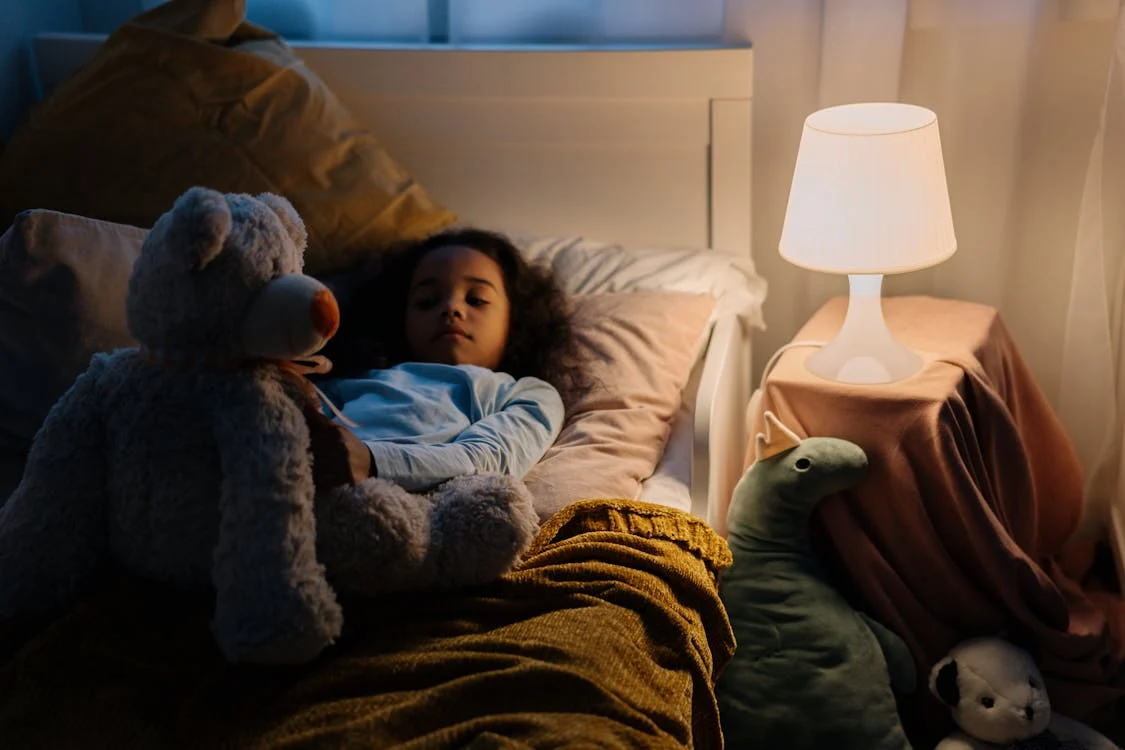Sleep is well established as critical for the development of any child, but many children diagnosed with developmental disorders, including autism, cannot achieve sound sleep habits. Their poor sleep habits lead to bad moods, behaviors, learning problems, and, in general, decreased functionality in the day. ABA has been accepted widely as an appropriate intervention to teach and reinforce positive behaviors like sleep training. ABA therapy encourages standard, evidence-based sleep schedules that help children sleep better and live better.
Understanding Sleep Problems in Children
Children with autism and other developmental disorders are susceptible to the following sleep problems:
- Difficulty falling asleep
- Nighttime awakenings
- Early morning waking
- Resistance to bedtime
Need to rely on caregivers to fall asleep
Thus, with the sensory sensitivities, problems in transition, anxiety, or even the child’s inability to soothe himself, these sleep problems can then be labelled. This, if left unchecked, may persist and develop into lifetime effects on a child’s emotional and cognitive development.
How ABA Therapy Supports Sleep Training
ABA therapy includes positive reinforcement of desirable behavior and minimization of undesirable behavior. In the sleep training approach, ABA techniques might help enable children to acquire and maintain bedtime routines, reduce resistance to sleep, and develop independent skills for sleeping. The strategies applied include
1. Development of a predictable routine
A predictable sleep routine is the backbone of successful sleep training. ABA therapists work with families to create a predictable sleep routine that has a predictable sequence of events that might include:
- Bath time
- Brushing teeth
- Storytime or quiet activity
- Bedtime at the same time each night
By repeating the same pattern each night, children begin to associate these activities with sleep and therefore bedtime is not a battle.
2. Use of Visual Schedules
Many of the children use pictures to help them know what is happening next in their routine. A bedtime schedule with pictures or symbols clearly communicates expectations and reduces anxiety that is usually prevalent at transitions. Visual schedules are among the types of reinforcement tools that ABA therapists often start using to help children navigate their nighttime routine.
3. Reinforcement and Rewards
The last intervention in ABA therapy is positive reinforcement. For instance, a child will receive a prize or praise once they get into bed correctly. These can include;
- Verbal reinforcement (“Excellent going to bed on time!”)
- Use of sticker chart to note improvements
- Story book at bedtime as an incentive
- Through reinforcing the correct behavior, a child is most likely to develop a routine behavior pattern of doing what is required of them.
4. Sleep Dependency Gradual Fade
Some children sleep in dependence on a caregiver, rocking or other sleep crutches. Fading is an ABA technique to help the child gradually fade out over time.
For example:
- A child needs a parent in the room-Back up gradually with regards to physical distance and help the child sleep independently.
- For a child who sleeps when there is music played or when there is a nightlight on-to-greater degrees reduce these factors.
- Gradually adjusting helps children to calm themselves and sleep independently.
5. Sleep Resistance and Problem Behaviors
Some children fight sleep by tantrum, out-of-bed or attention-seeking behavior. ABA intervention treatments of such behaviors because the cause of behaviors has to be discovered and applied behavioral approaches include:
- Extinction (Controlled Ignoring): Ignore attention-seeking behaviours, for example, insistent cries for a parent but making sure the child is safe.
- Bedtime Pass Method: A few pass reward for being demanding for sleep with parents
- Reinforce Sleep Behavior: Reward the child when he is sleeping undisturbed
6. Sleep Environment Manipulation
The ABA therapists collaborate with the family to make the sleep environment friendly to sleep. This can include:
- Room dark, quiet, potentially weighted blankets for comfort, but only used if it is helpful.
- Doesn’t watch much TV or screens before bedtime.
- Supportive strategies to relax.
7. Data Collection and Progress Monitoring
The use of data collection is part of ABA therapy. Duration and sleep quality are tracked by parents and therapists as well as any nighttime wakings and success in the bedtime routine.
Through this information, therapists will change their methods for long-term results.
Parents Role in Sleep Training
It is essential for the parents as ABA-based sleep interventions have to be used in the household. Therapists provide all the necessary tools and techniques required to achieve continuity at home. Some major suggestions to parents are:
- Establish Routine: The child has to stick to the set sleep pattern, even during the weekends.
- Patience: Change of behavior takes so long; hence, patience is needed, and consistency is imperative.
- Negative Reinforcement: Never give in to the demands the child used to reinforce bedtime resistance.
- Collaboration with Therapists: Maintain open lines of communication with the ABA team for modifications when necessary.
If you are looking for ABA therapy services in Missouri City, TX, we are here to help! Our dedicated team provides personalized, evidence-based ABA therapy to support children in developing essential skills, improving behavior, and fostering independence. Whether you need in-home or center-based therapy, we tailor our approach to meet your child’s unique needs. With a focus on positive reinforcement and structured learning, we create meaningful progress for your child and peace of mind for your family. Contact us today to learn how we can support your child’s growth and development.
Conclusion
It is quite difficult to point out a sleep behavior pattern that can be constant, but research-based ABA therapy provides that structure for changing sleep habits. Positive sleep routines are reinforced in children, and problematic behaviors are minimized, hence making them sleep independently. Eventually, with great patience and professional guidance, most children can actually sleep peacefully while going to bed without much hesitation, which could benefit the well-being of their family as a whole.
